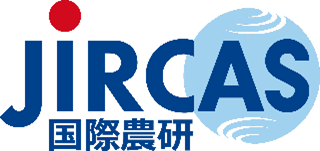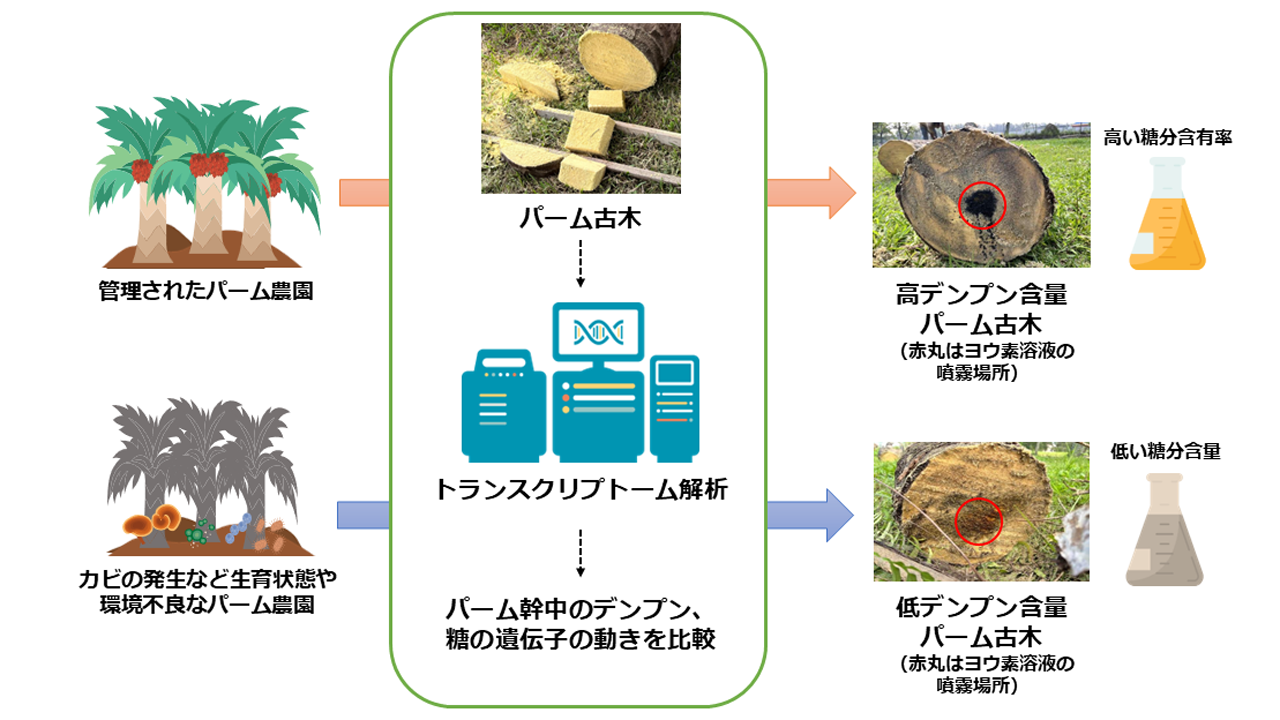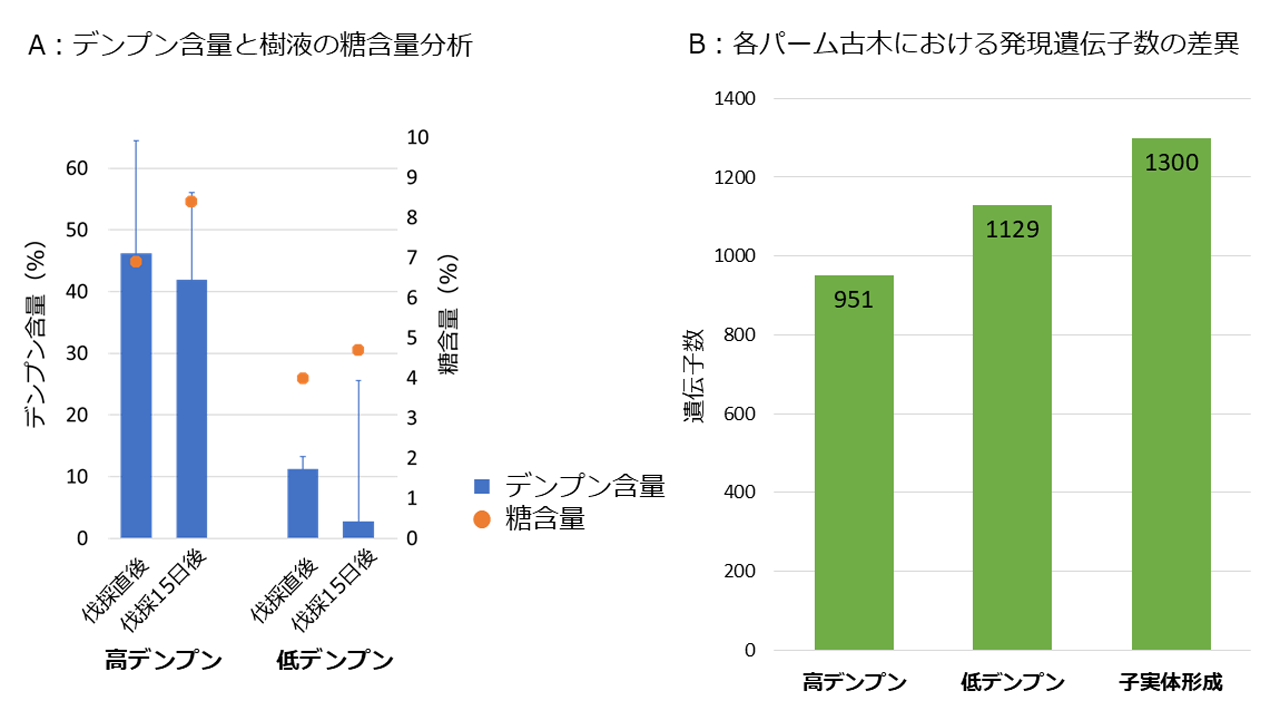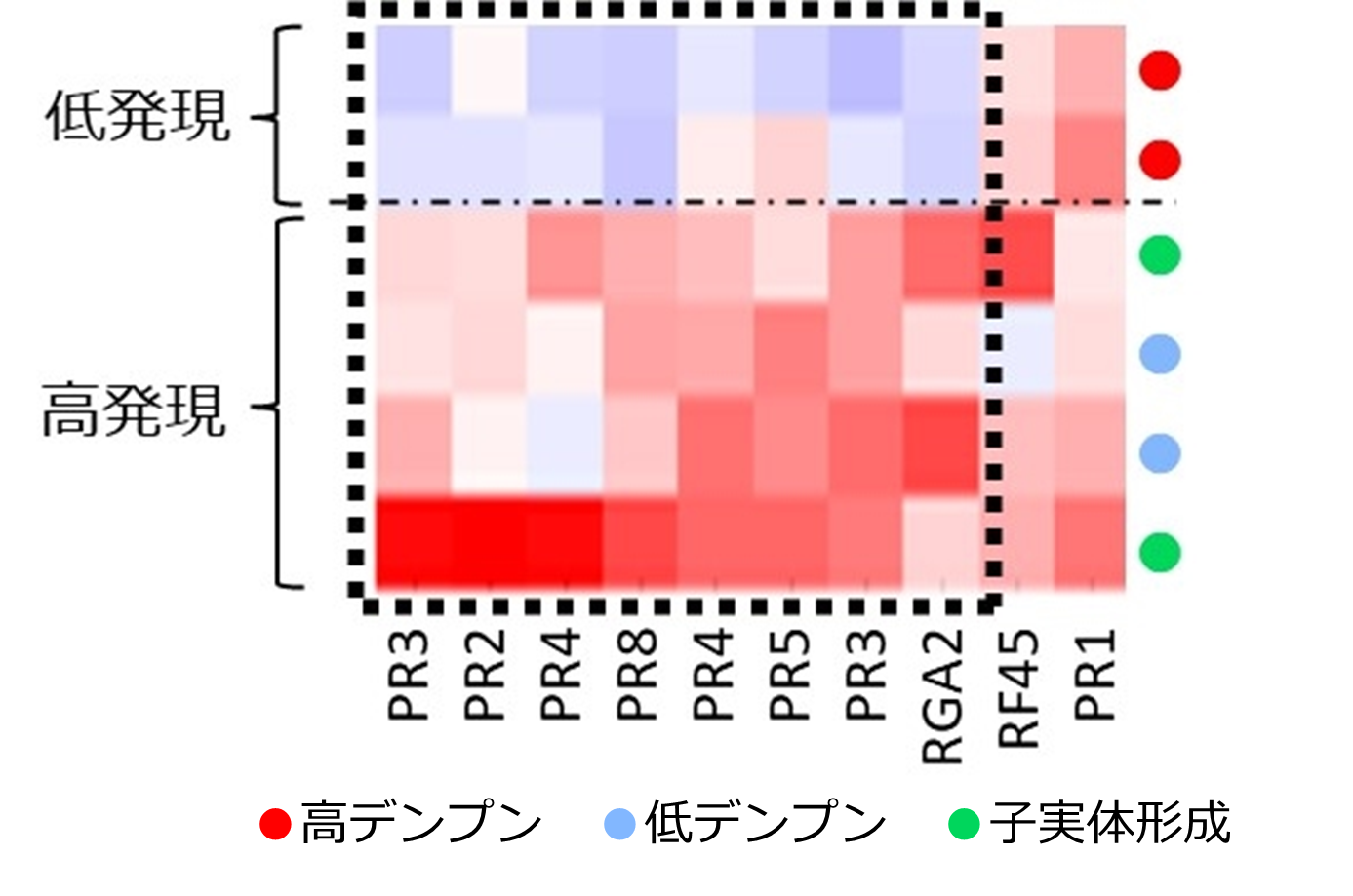研究成果
Unveiling the Mechanism of Starch Accumulation in Old Palm Trees
―Towards Achieving a Sustainable Palm Industry that Contributes to Environmental Burden Reduction―
Unveiling the Mechanism of Starch Accumulation in Old Palm Trees
―Towards Achieving a Sustainable Palm Industry that Contributes to Environmental Burden Reduction―
|
Main Points
|
OverVIew
The joint research group of JIRCAS and University Sains Malaysia (USM) has revealed that the amount of starch and sugar in old oil palm trees is significantly influenced by the growth conditions of the palm and the environmental conditions of the plantation.
Oil palms are felled and left in plantations when they reach the end of their lifespan. These abandoned old trees become sources of greenhouse gases and promote the growth of pathogens, hindering the growth of new seedlings. On the other hand, old palm trees contain starch and sugar, which are promising sustainable resources for bioethanol and bioplastics
In this study, transcriptome analysis was used to identify the factors affecting the starch content in palm trunks. The results showed that when pathogenesis-related proteins (PR proteins), which are seen during pathogen infection, are overproduced in the palm trunks, starch synthesis and accumulation are inhibited. It was also suggested that the activation of the plant immune system in old palm trees, due to deteriorating growth conditions and the plantation environment, inhibits starch accumulation.
These research findings clarify the impact of deteriorating plantation environments on the starch content in old palm trees, leading to the development of cultivation management techniques to promote starch accumulation. This will enable the efficient recovery of old palm trees from plantations and use the starch in these trees as raw materials for high-value-added products. As a result, what was previously considered waste can be utilized as a valuable resource, thereby reducing greenhouse gas emissions and improving the health of plantations. This circular approach is expected to significantly contribute to the realization of a sustainable palm oil industry.
These research findings were published in the electronic edition of the journal Industrial Crops and Products on June 7, 2024 (Japan time).
Publication
- Authors
- A. Hanis, A. Uke, K. Sudesh, and A. Kosugi
- Title
- Accumulation of starch and sugars, and effect on pathogenesis-related proteins in felled oil palm trunks from the replanting period
- Journal
- Industrial Crops and Products
DOI : https://doi.org/10.1016/j.indcrop.2024.118863
For Inquiries
JIRCAS President: KOYAMA Osamu
- Program Director:
- HAYASHI Keiichi
- Research Staff:
- UKE Ayaka (Biological Resources and Post-harvest Division)
KOSUGI Akihiko (Biological Resources and Post-harvest Division) - Press Coordinator:
- OMORI Keisuke (Head, Information and Public Relations Office)
Press e-mail: koho-jircas@ml.affrc.go.jp
Figure 1: Schematic overview of the study
Transcriptome analysis of old palm trees felled from well-managed and poorly managed plantations was performed, and the genetic activities of starch and sugar in the palm trunks were compared.
The starch concentration in old palm trees can be quickly determined by spraying iodine solution. A dark color indicates a high starch concentration, while a light color indicates a low starch concentration.
Figure 2: Starch content and sugar concentration in sap of old palm Ttees, and identification of differentially expressed genes
Left (A): 15 days after felling, the starch content decreased, while the sugar content increased. The bars in the graph represent standard deviation.
Right (B): The number of differentially expressed genes in each palm trunk is highest during fructification, followed by low-starch and high-starch conditions. This suggests that the number of differentially expressed genes is related to starch accumulation.
Figure 3: Effects of growth conditions on starch accumulation in old palm trees
The figure represents gene expression levels using color: the darker the blue, the lower the expression, and the darker the red, the higher the expression.
The number of PR proteins indicate the group number to which each protein belongs.
In the genes enclosed by the black dotted line, high starch content is associated with low PR protein expression, while low starch content and fructification show high PR protein expression.
This difference in gene expression has been shown to affect starch content.





